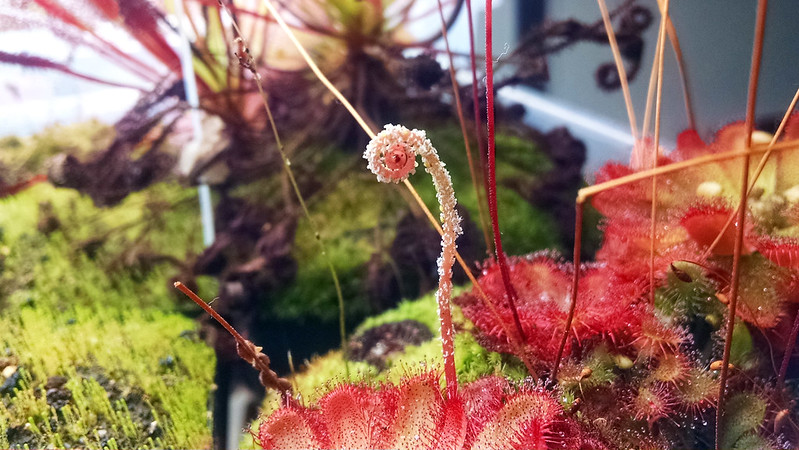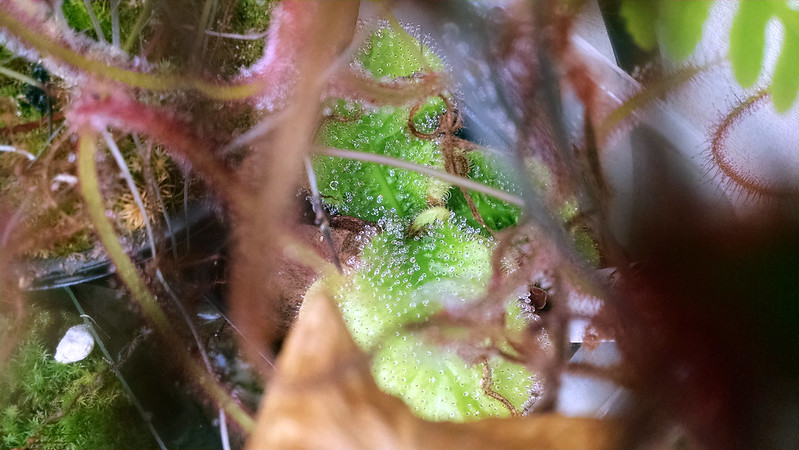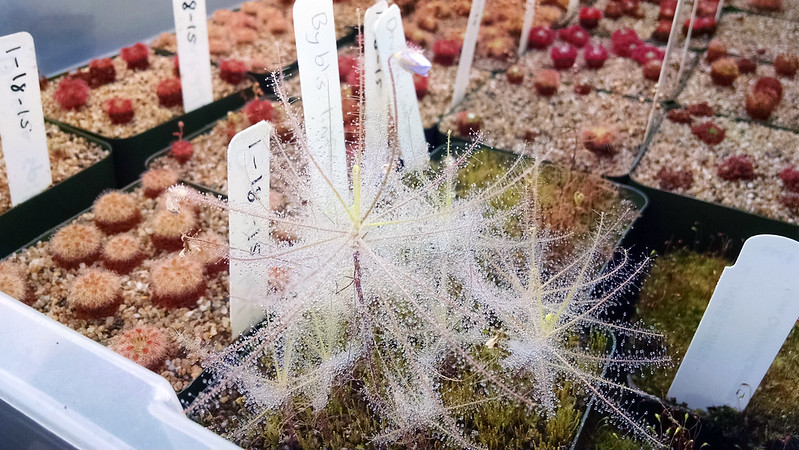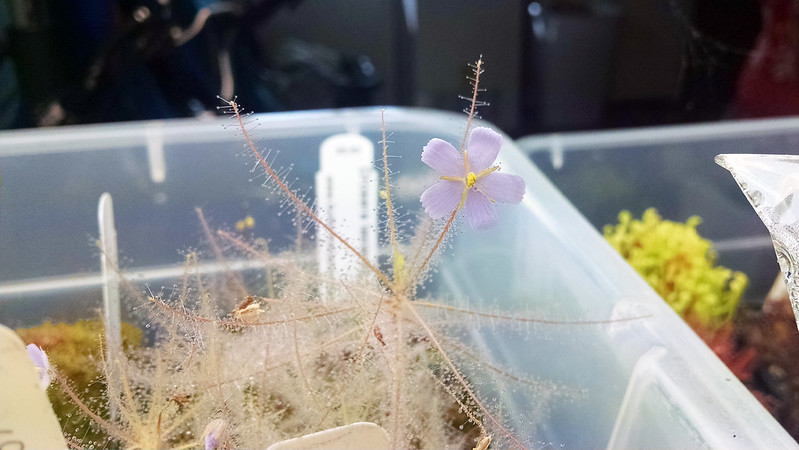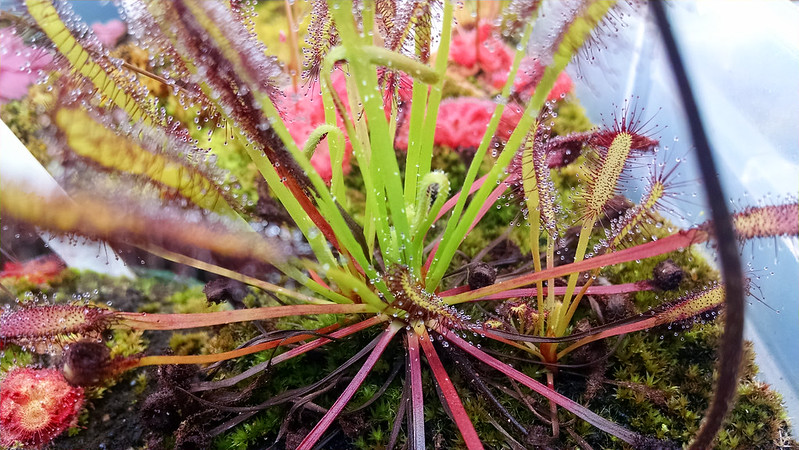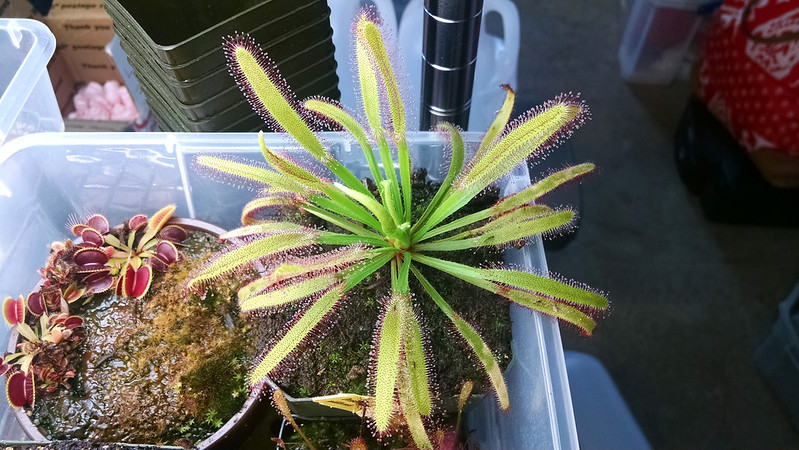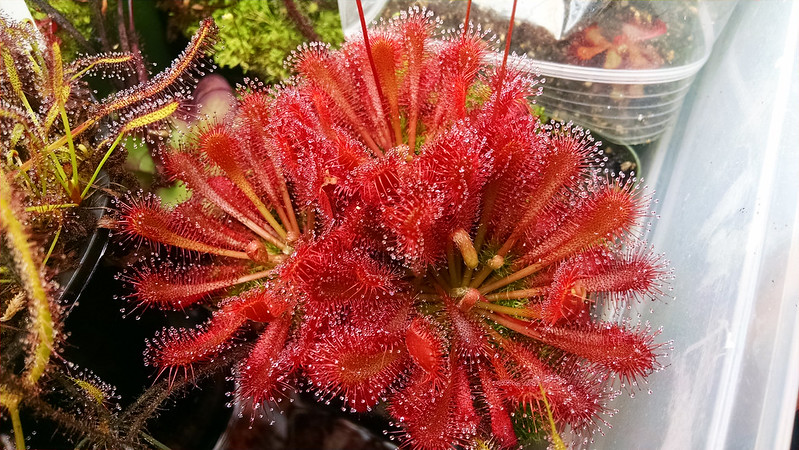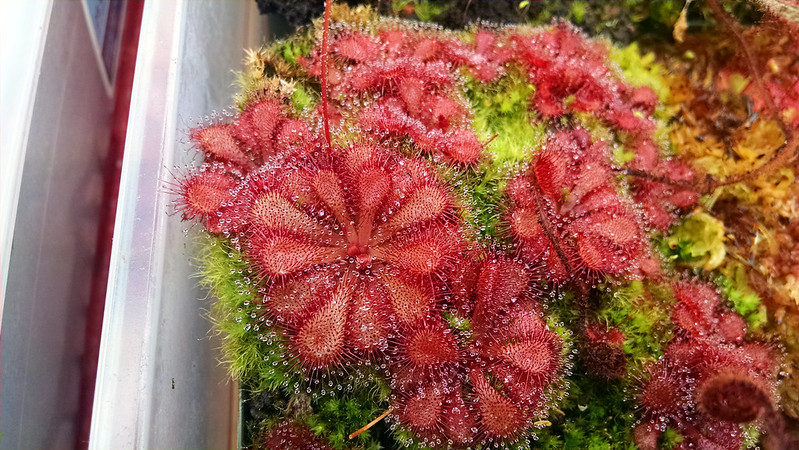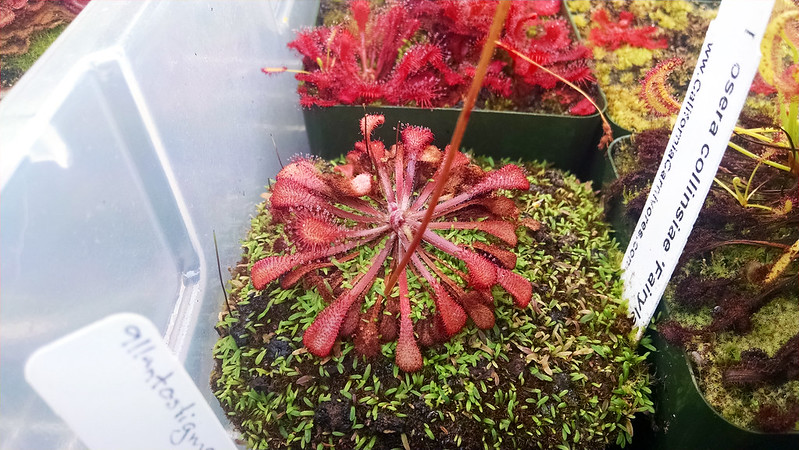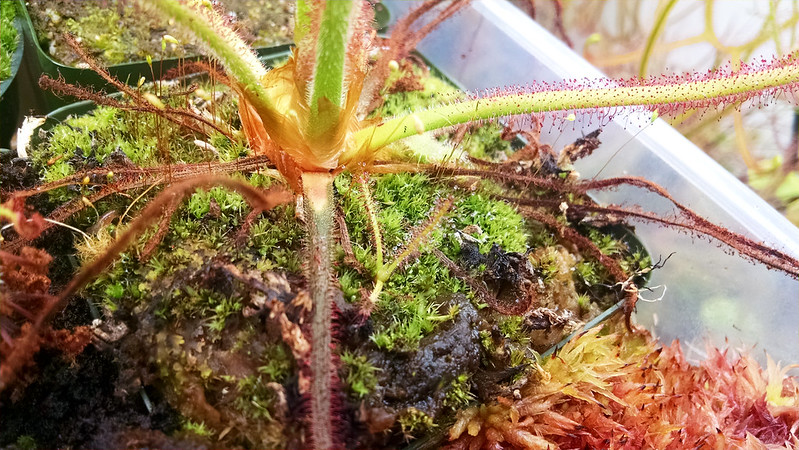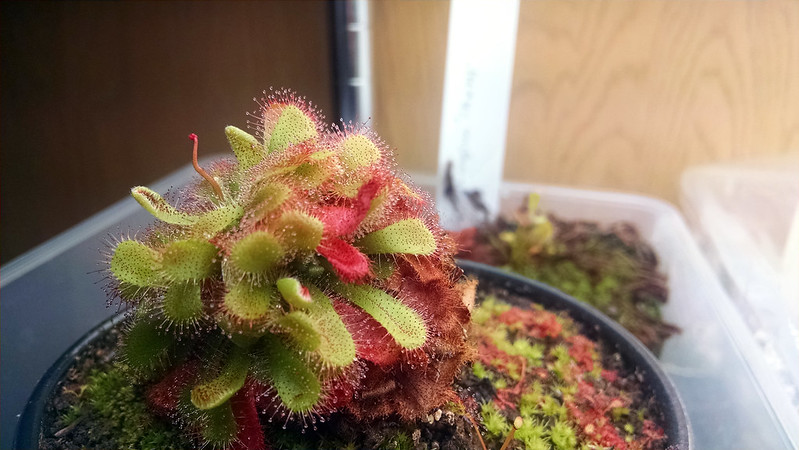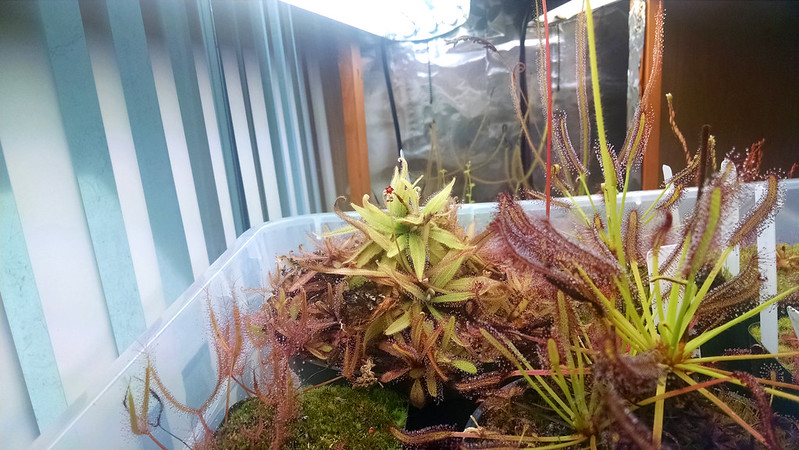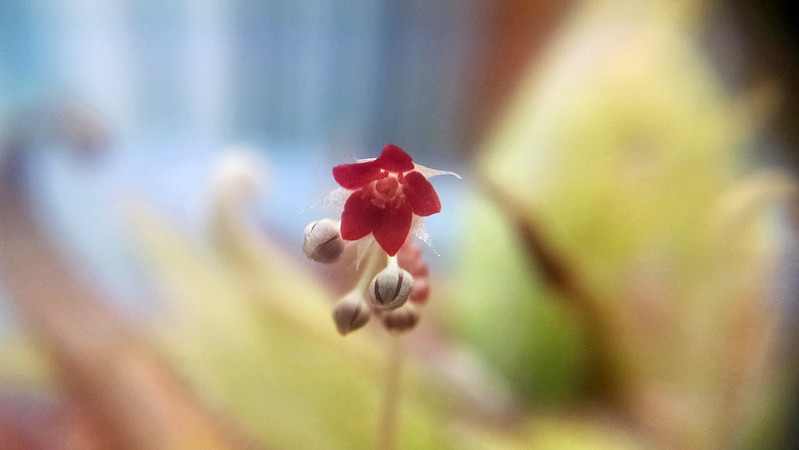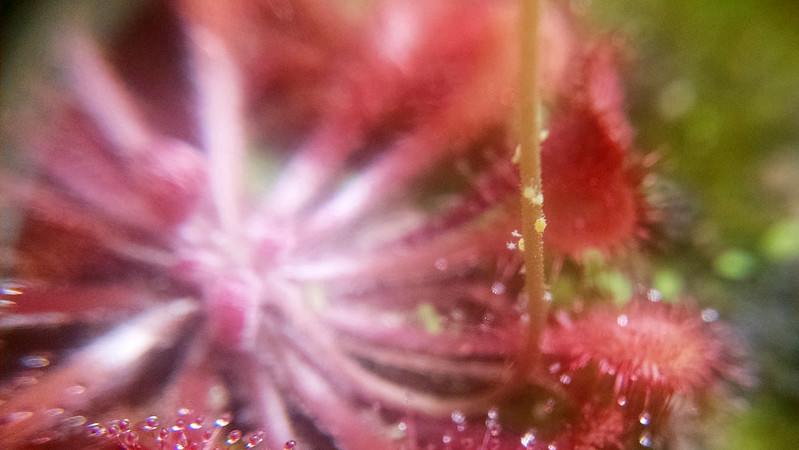As I've mentioned a few times in the past, I've had problems with aphids lately. I don't know where they came from, but come they did, first attacking my
Drosera anglica CA × HI, then my
Drosera aliciae, and then to the rest of my collection. I ended up attacking them with Take Down Garden Spray, which is Pyrethrin and canola oil. Damon over at
California Carnivores recommended Take Down, and after a month of repeated applications I think I've got the aphids on the retreat.
That's not without them taking their toll. Apparently one thing that aphids can do is make a plant just divide its growth point like crazy. This
D. aliciae is the most dramatic example of the phenomenon. When the aphids struck it was only
one plant. Now...
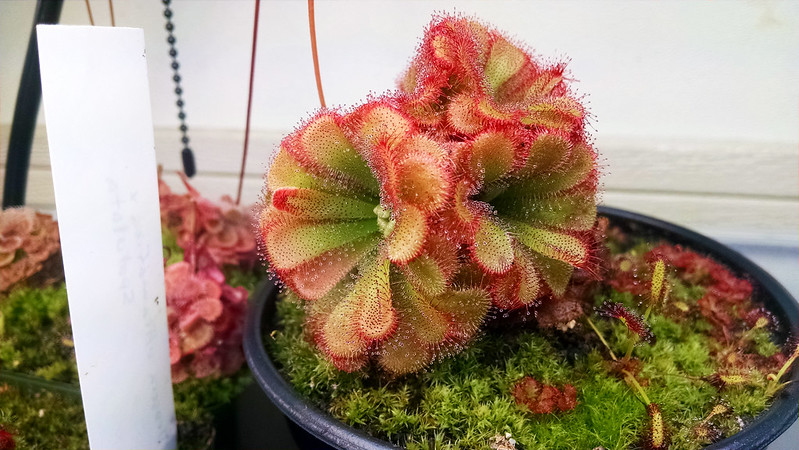 |
| Now that's one, two, three... |
 |
| Four, five...six? growth points. Seven? |
I think there are seven plants there now? Or at least growth points. I don't really know. I suppose someday I might separate them out, but for now I kind of like how it looks.
The
D. anglica CA × HI, which was hit much harder, also split.
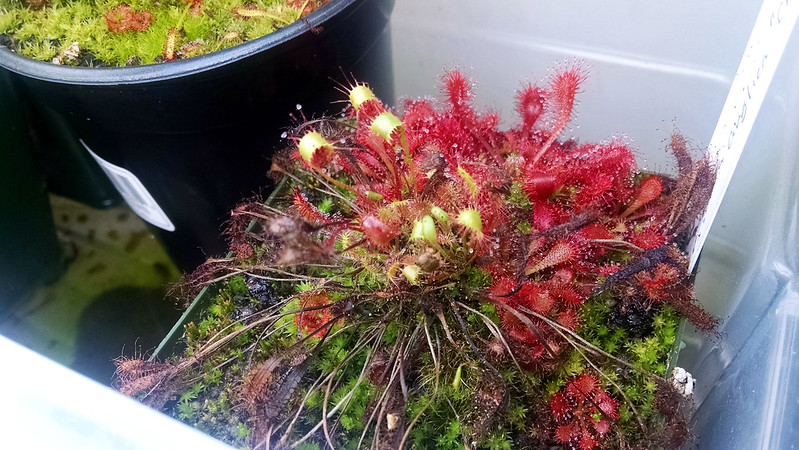 |
| This pot is a mess. |
It's a bit harder to see, since there are some
Drosera ultramafica ×
spatulata in there, and maybe a couple
Drosera burmannii. It's a big mess in the growth point though.
My
D. burmannii also had some aphids, but since
D. burmannii don't divide they just got to suffer.
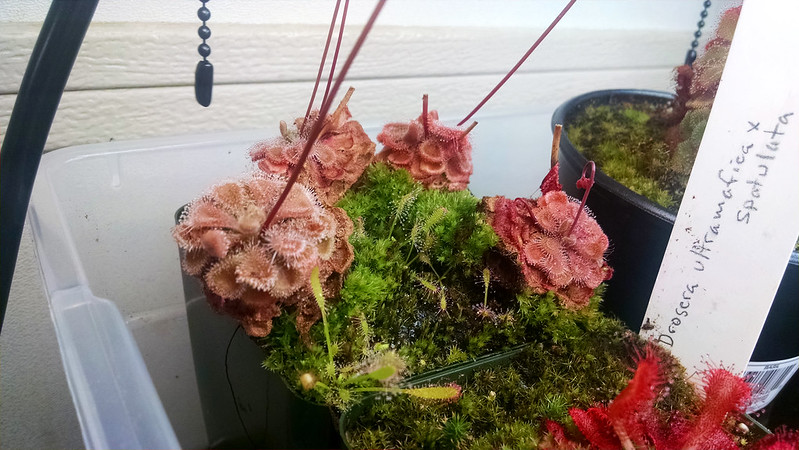 |
| My poor D. burmannii are such troopers. |
I'm not sure, but I think I may have noticed some caterpillar droppings in there too. Poor
D. burmannii, just getting the one-two punch.
I was very very annoyed to see aphids on my
Utricularia longifolia flower stalk. Either because of the aphids, or because of the repeated applications of Take Down, a few of the buds didn't develop, and the older ones faded earlier than I had expected.
 |
| I'm still very happy to have these flowers. |
At least they're gone now. I think. The new flowers still look great.
Whenever I talk about pests in my collection I like to also talk about bugs getting eaten. This is a fly that got trapped by my
Dionaea 'B-52' just as my roommate and my dad were out looking at my
Sarracenia with me.
 |
| It was a whole mini-drama. |
This photo is very ghoulish – the fly is reaching its front legs out in a (futile) attempt to escape.
Before I started growing carnivores I was never the sort of kid to, say, burn an ant hill with a magnifying glass, or pull the wings off of moths. I catch spiders in my house and put them outside instead of smashing them. Carnivorous plants, though, have a certain elegant brutality that allows me to appreciate their particular style of minor violence. Just look that that
Dionaea photo. It's grim.
. . .
Btw one of my
Byblis liniflora is forming a stem.
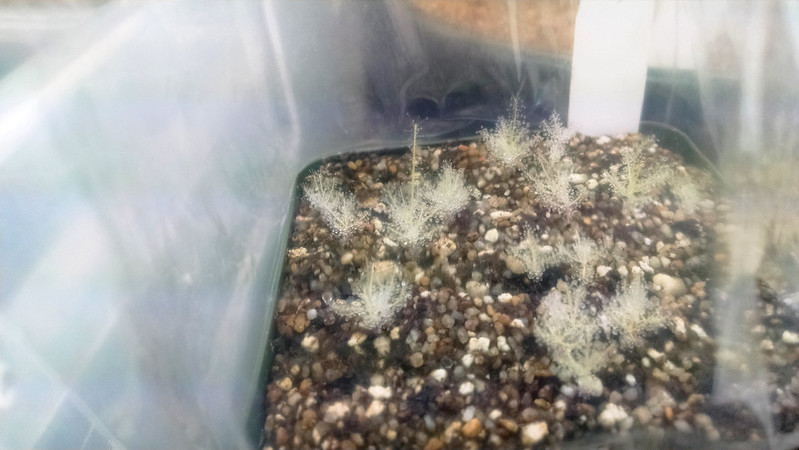 |
| Now I'm becoming enamored of Byblis. This could be a problem. |
Nice!
